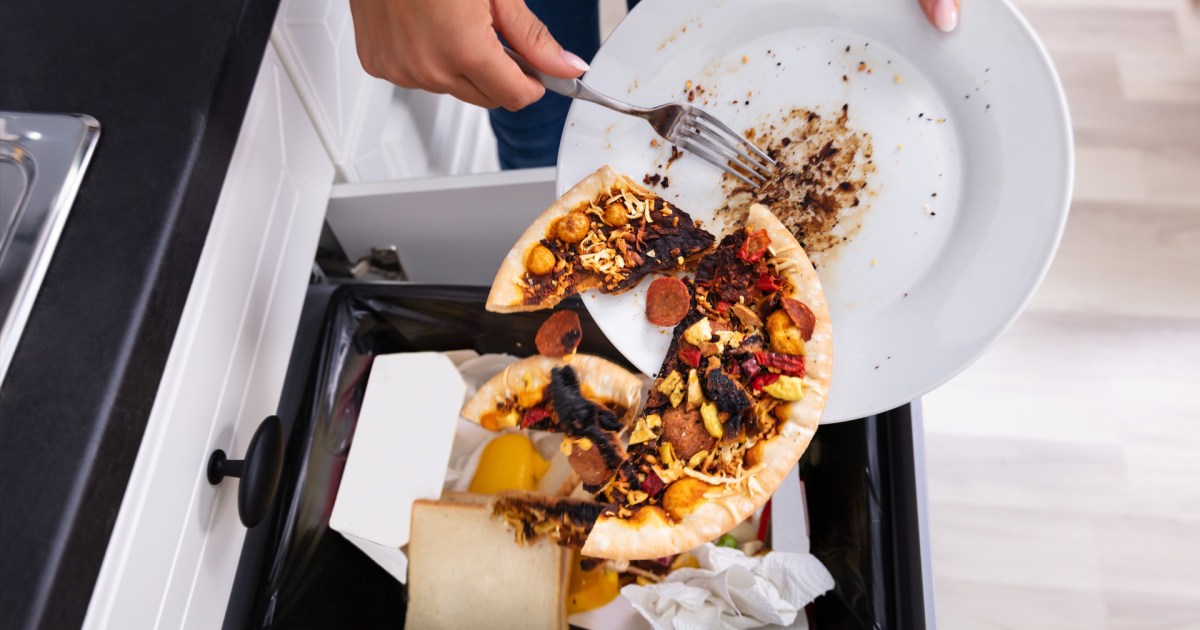Americans dispose of $ 165 billion in food annually, meaning that 40% of their food goes to waste in the form of leftovers, according to Insider.
If we open a refrigerator for any family, we will receive in our store compact boxes full of leftovers yesterday and maybe last week, after buying a lot of extra food became a prevailing behavior in light of the social spacing and reducing shopping times due to the pandemic of the Corona virus.
Although calculating the exact amount of what the family needs without residue or waste is not an easy matter, this does not mean cooking more food and throwing the rest of it in the refrigerator for a later time, which may cause food poisoning for the family members if these remains are not preserved and reheated properly.
To avoid food waste turning into a troublesome problem and material loss, we can prepare a list of our needs and stick to it, and not go back to buy more and flood the refrigerator with food before running out of what we bought, and we will discover in the end that the best benefit of food waste is that there will be no left at all, but if we cannot avoid that, let us make This remains a useful thing, through the following information and advice:
10 tips for making use of leftovers
To keep the leftovers fresh and safe to eat for as long as possible, the following is recommended:
1. Not to accumulate fridge and leave gaps between contents that allow air to flow to cool food residue well.
2. Make sure to set the refrigerator to 37 degrees Fahrenheit, and the freezer to 0 degrees Fahrenheit (degrees Celsius = 2.23 degrees Fahrenheit), according to the US Department of Agriculture instructions.
3. Using glass storage boxes to make it easier to know what is inside, and to directly heat food in them, because "plastic containers poison food over time," according to nutritionist Kerry Glassman.
4. Dr. Randy and Robo, a professor of nutritional microbiology at Cornell University, recommend packing leftovers in boxes not more than two inches deep, and leaving them exposed in the refrigerator for minutes until they cool completely before covering them.
5. Avoid reheating food on low heat, as it must reach an internal temperature of at least 165 degrees Fahrenheit (74 ° C) while being stirred to ensure equal heating in order to avoid food poisoning.
6. It is not allowed to heat food only once after cooking it for the first time, provided that the uneaten food residue is disposed of after reheating, according to the instructions of the US Department of Agriculture.
7. For reheating in the microwave, the US Food and Drug Administration (FDA) recommends that you use the cases designed for use in the microwave only, make sure that there is a vent for steaming, and turn off the microwave in the middle of the reheating process to stir the food until the heat is distributed evenly, and ensure that The broth remains, soups and sauces to full boil.
8. Not keeping food residue in the utensils that have been cooked in it, transferring it in a tight container and cooling it for two hours (and less than an hour in hot weather) to prevent the growth of bacteria, and I don't mind - according to Robo - from putting it in the refrigerator while it is still warm.
9. Use food leftovers to make the most of them to make something new, such as toasting the remaining bread to make a fattoush salad, use the remaining vegetables in soups, prepare juices from fruit residue, and so on.
10. Finally - according to Dr. and Robo, too - the leftovers must be eaten within 3 or 4 days, and if there is any doubt about their safety, it is better to get rid of them.
Safe duration
Since it is very common to leave some leftovers after eating, the US Food and Drug Administration recommends keeping and cooling these residues in the refrigerator provided they are consumed within a maximum period of 4 to 7 days, or frozen in the freezer, and not to keep any leftovers from fresh seafood for more than One to two days, as "one of the most polluted food products, it degrades easily and quickly."
Duration is therefore the scale, so do not trust your nose and do not depend on the smell to make sure the food remains safe. According to food safety experts, you cannot know if the food remains are safe to eat or not, because pathogenic bacteria such as salmonella, oleic and listeria are often invisible to the naked eye, So it is best to "use the duration or time scale" to prevent poisoning, according to Dr Robo.
Because bacteria spread faster in cooked food due to the availability of water, heat, and the appropriate acidity for their reproduction, any food that is not eaten must be frozen within a week. Most cooked foods may last months if stored in the freezer correctly, taking into account the separation and distribution of food in small boxes before storing it in The refrigerator, because the time required for each food is different from the other, so that it does not destroy each other.

